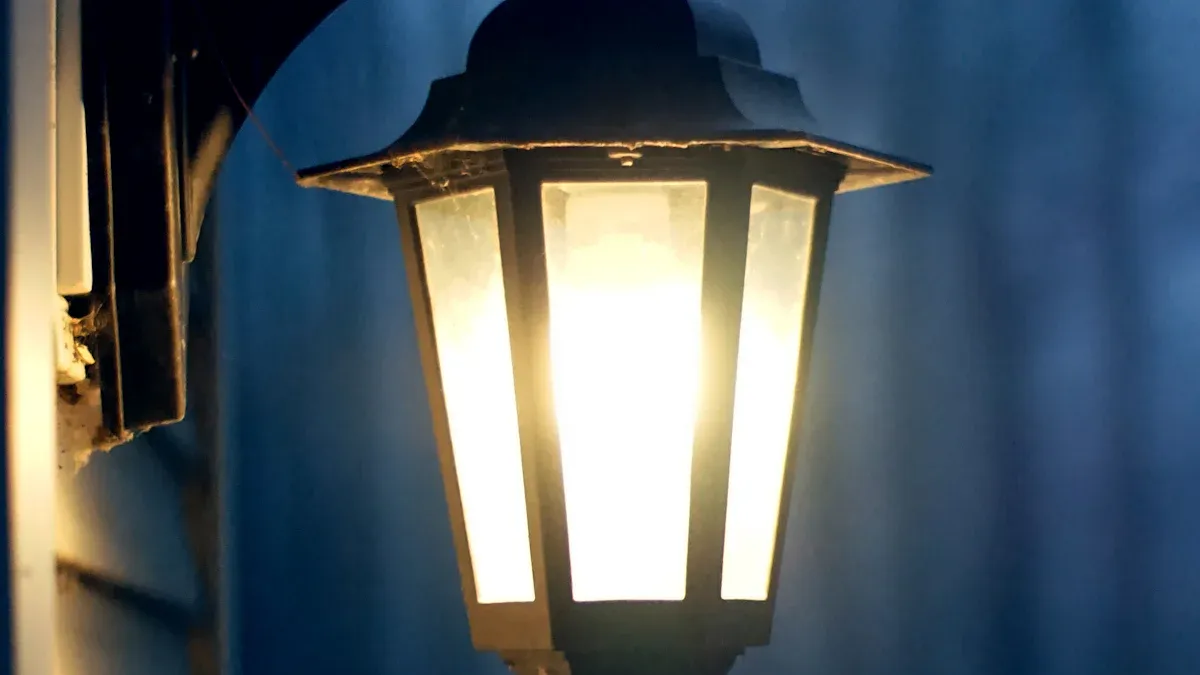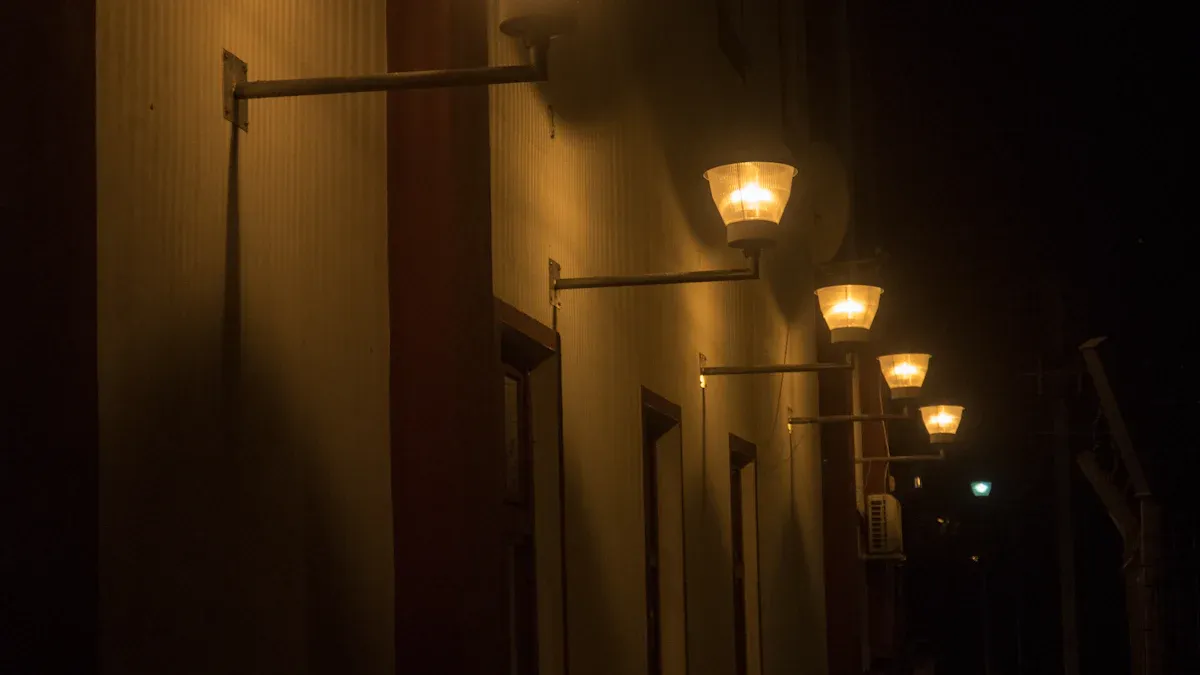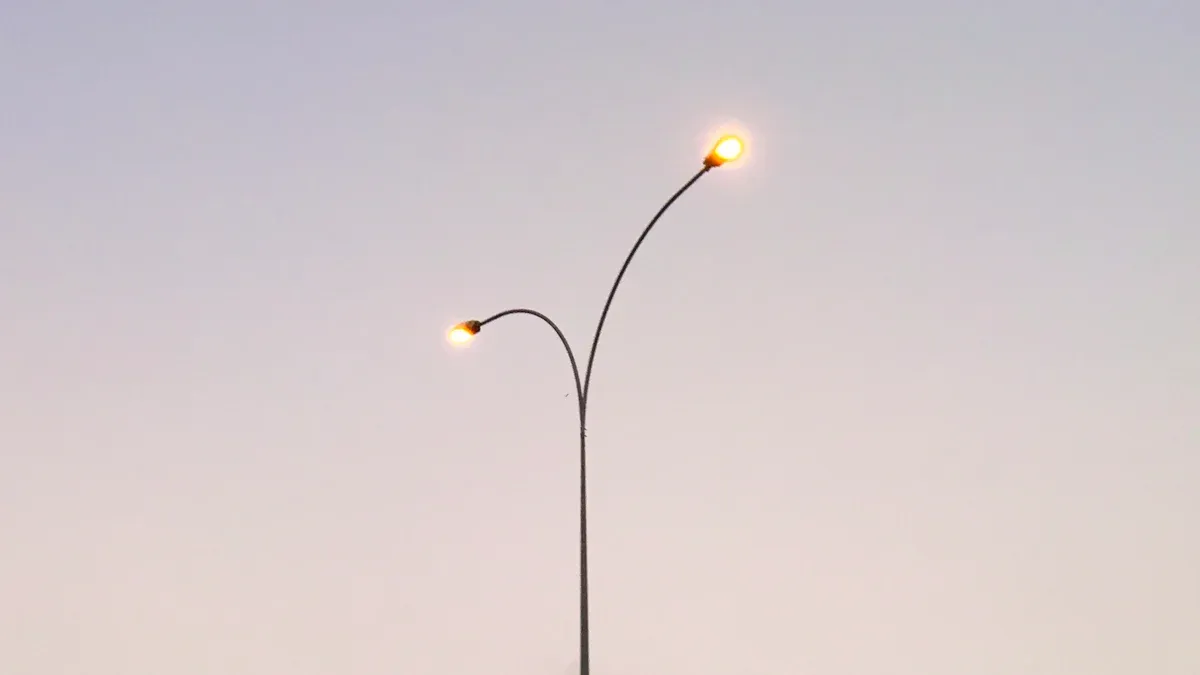Street Light Illumination: Brightness Standards, Color Temperature, and Impact on Communities

Street lights are important for keeping neighborhoods safe at night, adhering to brightness standards that enhance visibility. They help drivers see dangers, prevent accidents, and make people feel secure while walking. Studies show that lights at intersections, which meet brightness standards, make driving at night safer. For example, research in Minnesota found that street lights reduced crashes, particularly in cities where slower speeds allow drivers to notice hazards more easily.
Street lights do more than just improve safety; they also help communities feel better. City records indicate that better lighting, aligned with brightness standards, lowered violent crimes by 35%. No murders occurred near areas with improved streetlights. Understanding brightness standards illustrates how good lighting contributes to making places safer and friendlier for everyone.
Key Takeaways
Street lights make areas safer by helping people see better. They reduce accidents and help lower crime in neighborhoods.
Brightness rules make sure street lights work well. They help cities plan lighting for drivers, walkers, and bikers.
Picking the right light color matters for seeing clearly. Warm lights feel cozy, while cool lights are safer to use.
LED street lights use less energy and cost less. They last longer and light streets better for safety.
Smart lights change brightness when needed. This saves energy and keeps cities safer.
Brightness Standards and Their Importance
What Are Brightness Standards for Street Lights?
Brightness standards make sure streetlights are safe and bright enough. These rules set limits to measure how well lights work. Important factors include luminous flux, illuminance, luminous intensity, and luminance. Each factor helps decide how good a streetlight is.
Factor | Unit | What It Means |
|---|---|---|
Luminous Flux | lumens (lm) | Total light a source gives off. |
Illuminance | lux (lx) | Light hitting a surface; rules differ by road type. |
Luminous Intensity | candela (cd) | How light spreads in an area; key for road lighting. |
Luminance | cd/m² | How bright light looks to the eye; roads need 0.3 ~ 2 cd/m². |
These factors help cities plan lights for drivers, walkers, and bikers. For instance, good sidewalk lighting makes walking at night safer. Following these rules creates bright spaces that help people feel safe and comfortable.
Why Brightness Levels Are Important
Good brightness levels keep streets safe and useful. Bright streets help drivers see dangers faster, lowering accident risks. Walkers also feel safer, which makes them more likely to go out at night.
Set brightness rules are key for city safety. Studies show adding lights to dark areas lowers crime. Bright lights show care for a place, which can stop bad behavior. They also make people feel safer when walking or biking at night.
Brightness also affects how well lights work. Too-bright lights can cause glare, making it hard to see. Dim lights might not light up important spots like crosswalks. The right balance makes streetlights work best.
How Brightness Is Checked and Controlled
Checking brightness needs special tools and methods. Tools like light meters measure how good the light is. A study tested 21 light meters with different accuracies, from 0.001 lx to 1 lx. It found pricier tools were often more accurate. But having a calibration certificate doesn’t always mean the tool works well for all lights. Picking the right tool is very important.
Rules for brightness differ by area but often follow global standards like EN13201. These rules set minimum light levels for different roads. Following these rules makes sure lights are safe and do their job well.
Understanding Color Temperature in Street Lighting

What Is Color Temperature and Its Measurement?
Color temperature shows the color of light from a source. It is measured in kelvins (K) and tells if light looks warm (yellow) or cool (blue). For example, a candle has about 1900K, while noon daylight is around 6500K. This helps design streetlights for different places.
Experts use tools like spectrometers to measure color temperature. These tools study the light and compare it to standards. Another key term is Correlated Color Temperature (CCT), which groups lights by their temperature. The Color Rendering Index (CRI) checks how well a light shows object colors. A CRI near 100 means colors look natural under that light.
Here’s a simple table to explain:
Aspect | Description |
|---|---|
Color Temperature | Measures light color in kelvins (K). |
Correlated Color Temperature | Groups lights by their temperature. |
Color Rendering Index (CRI) | Rates how well light shows object colors, from 0 to 100. |
Measurement Method for CRI | Compares light on color samples to check accuracy. |
Reference Standard | Matches each color temperature to a standard, like 6500K for noon light. |
Knowing these terms helps pick the best lighting for streets. This ensures safety and comfort for everyone.
Comparing Warm and Cool Lighting for Different Settings
Warm and cool lights work well in different places. Warm lights, between 2700K and 3000K, feel cozy and welcoming. They are great for homes and neighborhoods where people relax. Cool lights, from 4000K to 5000K, make things clearer and safer. They are best for busy areas like stores or roads.
Here’s a table to compare:
Lighting Type | Color Temperature (K) | Preferred Setting | Key Benefits |
|---|---|---|---|
Warm Lighting | 2700K–3000K | Residential Areas | Feels cozy and inviting. |
Cool Lighting | 4000K–5000K | Commercial Zones | Improves visibility and safety. |
Energy Efficiency | Above 4000K | General Use | Saves energy with more light per watt. |
When choosing streetlights, think about the area and its needs. For example, parks might need warm lights for relaxing. Busy roads need cool lights for better visibility.
The Role of Color Temperature in Visibility and Atmosphere
Color temperature changes how you see your surroundings. Cool lights make details sharper and colors clearer. That’s why they’re used in places like highways and parking lots. Warm lights feel softer and more welcoming. They’re good for homes or public spaces where people gather.
The right color temperature also affects how people feel about a place. Cool lights can make areas seem modern but might feel harsh if overused. Warm lights feel friendly but might not be bright enough for safety. Balancing both types makes lighting useful and pleasant.
By learning about color temperature, you can choose lights that improve safety and mood. Whether for a quiet street or a busy city, picking the right light makes spaces better for everyone.
Environmental and Health Impacts of Street Lighting
Addressing Light Pollution and Its Effects
Streetlights are important but can cause light pollution. This happens when light shines where it’s not needed, disturbing nature. For example, studies found fewer caterpillars in lit areas. LED-lit hedges had 52% fewer caterpillars, while HPS-lit hedges had 41% fewer. Grassy areas also saw drops, with 43% fewer caterpillars in LED-lit zones and 24% fewer in HPS-lit zones. Caterpillars exposed to light grew heavier, showing their growth was affected.
Light pollution also harms birds, bats, and other animals. You can help by supporting lights that reduce extra brightness. Shields can direct light only where it’s needed, protecting wildlife.
The Impact of Artificial Light on Human Health
Streetlights can affect your body’s natural clock. Too much light at night can mess up your sleep cycle. This often causes trouble sleeping. Artificial light also lowers melatonin, a hormone that helps you sleep and stay healthy. Over time, this can lead to stress and health problems like chronic illnesses.
To stay healthy, support streetlights with adjustable brightness. These lights can dim late at night, helping you sleep better and stay well.
Balancing Illumination with Environmental Sustainability
It’s important to balance good lighting with protecting the environment. Energy-saving LED lights are a great option. They use less power and last longer than older lights, which helps the planet. But it’s key to pick LEDs with the right brightness and color to avoid light pollution.
Smart lighting systems are another good choice. These systems change brightness based on what’s needed. They keep streets safe while saving energy. By using these technologies, communities can have eco-friendly and effective lighting.
Community Impacts of Street Lighting

Making Neighborhoods Safer and Reducing Crime
Streetlights help keep neighborhoods safe by lighting up streets. Bright streets let you see clearly and lower crime chances. Studies show better lighting reduces crime rates a lot. For example:
In New York City, bright temporary lights cut outdoor crimes by 36%.
Another study found a 39% drop in nighttime crimes with new lights.
Newark, NJ, is testing how LED lights affect violent crime over time.
These examples show how good lighting stops crime and helps you feel safer. More streetlights also mean fewer crime victims, proving their value in city planning.
Encouraging Walking and Nighttime Fun
Streetlights don’t just stop crime; they make walking at night fun. Bright streets make you want to explore your area after dark. Research says lights and plants together make places feel safer and more inviting.
Key Findings | How It Helps Walking |
|---|---|
You’ll enjoy walking and nighttime events. | |
Bad lighting keeps people away. | Fewer people use dark streets. |
Seeing others makes you feel safer. | You’ll walk more in public spaces at night. |
When streets are bright and friendly, you’ll enjoy evening walks, shop locally, or join events. This builds a lively and connected neighborhood.
Matching Lights to Community Needs
Streetlights should fit your neighborhood’s style and needs. People like lights that match their area’s look, whether old-fashioned or modern. Choices include how many lights per pole, colors, and materials. Adding lights that match benches or trees makes streets look nice.
By asking for community input, cities can design lights that work well and look good. This way, streetlights meet safety rules and make your area a better place to live.
Innovations in Street Lighting Technology
The Benefits of LED Street Lighting
LED streetlights have many benefits for modern cities. They save energy, cut costs, and improve safety. LEDs use 50–70% less energy than older lights. This helps cities lower their electricity bills. For example, Los Angeles saved 40% on energy costs after switching to LEDs.
LEDs last longer, up to 50,000 hours, reducing repairs. This saves money on maintenance and replacements over time. Their bright, white light makes roads safer for drivers and walkers. LEDs turn over 90% of energy into light, wasting very little.
Benefit | What It Does |
|---|---|
Energy Savings | Uses up to 70% less energy, saving money. |
Maintenance Cost Reduction | Lasts longer, so fewer repairs are needed. |
Improved Visibility | Bright light makes streets safer for everyone. |
Environmental Benefits | Lowers CO2 emissions and uses less fossil fuel. |
Switching to LED streetlights is a smart way for cities to save money, improve safety, and help the planet.
Smart Lighting Systems for Urban Areas
Smart lighting systems use technology to make cities more efficient. These systems have sensors and wireless controls to adjust lights as needed. For example, Swiss cities use motion sensors to turn lights on only when needed, saving 86% of energy.
Cities like Paris and Atlanta have also used smart lighting with great results. Paris combined smart streetlights with traffic signals, saving energy and improving communication. Atlanta tested 1,000 LED lights with wireless controls, making streets safer and saving energy.
City | Project Details | Results |
|---|---|---|
Paris | Combined smart streetlights with traffic signals. | Saved energy and improved communication systems. |
Atlanta | Tested wireless-controlled LED lights. | Increased safety and reduced energy use. |
U.S. City | Replaced old lights with smart systems. | Cut energy use by 40%, reduced accidents, and needed fewer repairs. |
Smart lighting saves energy and adjusts brightness based on movement. Cities can monitor lights remotely, fixing problems faster and saving time.
Energy-Efficient and Sustainable Lighting Solutions
Energy-efficient lighting focuses on saving power and helping the environment. LEDs and smart systems use less energy and cost less to run. Cities using LEDs save 40–60% more energy than with older lights. These systems also lower CO2 emissions, helping fight climate change.
When paired with smart controls, daily energy savings can reach 48–69%. For example, Knittelfeld, Austria, cut energy costs by 80% and made roads safer. These systems also reduce accidents and crime at night.
Metric Type | Typical Results | Impact |
|---|---|---|
Power Reduction | 58% less than fluorescent lights | Saves energy directly. |
Daily Energy Savings | 48–69% with smart controls | Improves efficiency. |
Annual Cost Reduction | Up to 75% per installation | Saves money for cities. |
Using energy-efficient lighting helps communities save money, protect the environment, and make public spaces safer.
Keeping brightness and color temperature balanced is key for good street lighting. Outdoor lights between 5000K and 6000K work best. These lights make streets safer and easier to see. Higher color temperatures make things clearer and follow safety rules, helping people and nature.
Eco-friendly lighting also solves health and environmental problems. Experts suggest smart ideas to meet these goals:
Source | What It Teaches |
|---|---|
Energy-Saving Street Lighting Projects | Ideas for better public lighting in India. |
LED Lighting Success Stories | Examples of using LED lights in cities. |
Government and Smart Lighting Plans | Shows how governments support smart lighting systems. |
Using these ideas makes streets safer, greener, and better for everyone.
FAQ
What is the best brightness for streetlights?
The best brightness depends on the area. Neighborhood streets need less light (about 5-10 lux). Highways need more light (20-30 lux). These levels keep areas safe and prevent glare or too much light.
How does color temperature change street lighting?
Color temperature changes how light looks. Warm lights (2700K-3000K) feel cozy and relaxing. Cool lights (4000K-5000K) make things clearer and safer. Pick the right one based on the place and its use.
Can streetlights help save energy?
Yes, new streetlights like LEDs save energy. They use up to 70% less power than older lights. Smart systems save even more by changing brightness when needed.
How do streetlights affect animals?
Bad lighting can harm animals. It changes how night animals act and grow. Using lights with shields and warm colors helps protect nature.
Are smart lighting systems a good idea?
Yes, smart lights save money over time. They use less energy, need fewer repairs, and make streets safer. Cities using them report big energy savings and better lighting.
See Also
Effective Commercial Lighting Strategies For Business Success
Advantages Of LED Street Bulbs For Modern Lighting Solutions
Understanding LED Street Lights: Key Benefits And Technologies
Comparing LED Streetlights And Traditional Lights: Cost And Efficiency
LED Alternatives To Low Pressure Sodium: Efficiency And Impact

